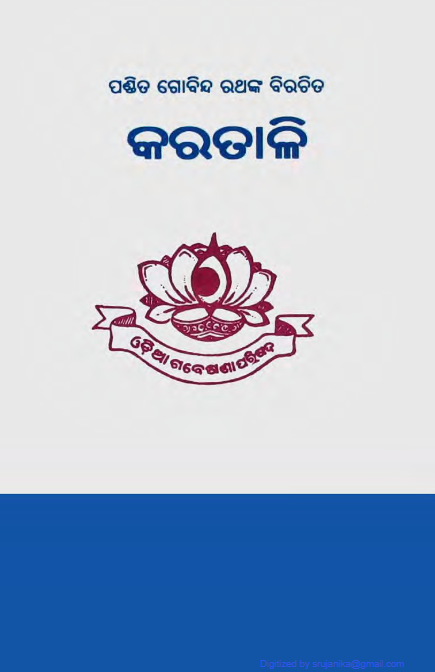Published in 1909 and later reissued in 2009, Karatali by Gobinda Rath stands as a significant contribution to Odia literature and poetry. A poet, playwright, and essayist, Rath’s work encapsulates the rich cultural tapestry of Odisha and reflects the evolution of Odia poetry into the modern era. With its lyrical quality, deep philosophical insights, and vibrant imagery, Karatali has continued to resonate with readers over the decades.
Karatali translates to the Resonance of a Bell and serves as an apt metaphor for the awakening of consciousness and the call to introspection. At the heart of this collection lies the exploration of human emotions, nature, and the divine. Rath’s verses often weave together personal experiences with broader existential themes, drawing readers into a contemplative journey.
One of the most striking features of Karatali is Rath’s profound connection to nature. His poetry embodies a deep appreciation for the natural world, using it as a mirror for human emotions and experiences. Through vivid descriptions of landscapes, rivers, and the changing seasons, Rath conveys a sense of harmony between humanity and the environment. This connection to nature not only serves to evoke visual imagery but also elevates the spiritual aspects of his work, inviting readers to find beauty and solace in the world around them.
Rath’s poetry often touches on the theme of spiritual exploration. In Karatali, the poet delves into the complexities of the human condition, questioning existence, purpose, and the nature of reality. His verses reflect a deep yearning for understanding and transcendence, presenting readers with a rich tapestry of spiritual reflections. The metaphor of resonance—implied in the title—suggests the idea of echoes of truth and the quest for enlightenment, drawing parallels between the inner self and the universe.
The beauty of Karatali lies not only in its themes but also in its unique artistic expression. Gobinda Rath’s mastery of language is evident as he employs a range of poetic devices—metaphor, simile, and personification—to create compelling imagery. His rhythmic verses flow with a natural cadence that enhances the reading experience, making the poetry accessible yet profound. The seamless blend of classical and modern elements in his style marks a significant evolution in Odia poetry, appealing to a diverse audience.
When Karatali was first published in 1909, it emerged during a transformative period in Odisha’s cultural landscape. The early 20th century saw a resurgence of interest in literature, art, and spirituality, driven by a growing sense of identity and pride among Odias. Rath’s work can be seen as part of this renaissance, contributing to the evolution of Odia literature and inspiring subsequent generations of poets and writers.
In its 2009 reissue, Karatali continues to hold relevance, as new readers discover Rath’s poignant reflections on life, love, and spirituality. The timelessness of his themes ensures that his work resonates with contemporary audiences, encouraging them to reflect on their own journeys and the world around them.
Books Info
| Books name | Karatali / କରତାଳି |
| Author | Gobinda Rath |
| No Of pages | 113 |
| Publisher | Odia Gabeshana Parishada |
| Publication | 1909, 2009 n. |
| Printed At | Sri Ganesha Printers |
| Distributor | NA |

